“In 2022, we reached a point where we were wondering whether we should keep the garden open or close it,” botanist William Cinéa confides to AyiboPost.
Affected by natural disasters and insecurity, the Cayes Botanical Garden is struggling to stay afloat.
The South’s premier tourist and botanical conservation area was almost 85% destroyed by the devastating impact of hurricane Matthew in 2016.
“Since then, the garden has faced some difficult situations,” the initiator of the project, botanist William Cinéa, tells AyiboPost.

A welcome sign at the Botanical Garden of Les Cayes in 2018. | Photo : Widlore Mérancourt
Starting in 2017, the garden began to regain its vegetation.
But as of 2019, the great waves of insecurity and political unrest have completely handicapped the garden’s activities which, for its survival, essentially depends on the profits obtained during visits, especially during holidays.
“In 2022, we reached a point where we were wondering whether to keep the garden open or close it,” botanist William Cinéa confides to AyiboPost.
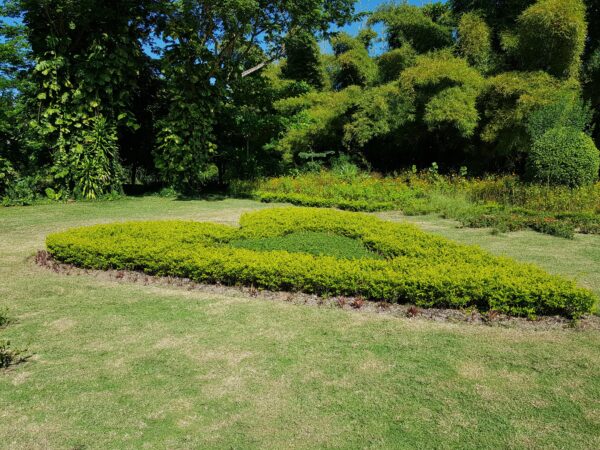
Landscaping in the shape of a heart on the ground of the Botanical Garden of Les Cayes in 2018. | Photo : Widlore Mérancourt
Between 2017 and 2018, the garden had around fifty employees.
In September 2022, this figure fell to just five staff members in a post-earthquake context of fuel scarcity and blockades in certain places.
Between 2013 to 2017, the space received an average of 30,000 to 50,000 visitors per year.
From 2019 to 2022, the garden fluctuated between 5,000 to 10,000 visitors per year with difficulty.
Although the current trend in visits suggests a renewed interest in the Botanical Garden, climate change is among the many challenges of the present.
Read also: Photos | Wynne Farm : un joyau écologique en proie à l’insécurité et à la fermeture
The Botanical Garden gathers plants from all over the country–mainly from Macaya Park–with a view to later preserving them in the town of Les Cayes.
“With temperature variations, an ecological disturbance has taken place, requiring considerable expenditure for the installation of protective greenhouses,” explains William Cinéa.
This infrastructure increases maintenance costs by 10 to 15%. “This represents a considerable financial burden,” adds the garden manager.
The situation affects many species, which perish because they cannot adapt to the climate or to the microclimate rather.
In addition, natural disasters, like Matthew in 2016, the earthquake of August 14, 2021, as well as the droughts of 2018, prevent forecasting for the operation of the Garden.
Between 2017 and 2018, the garden had around fifty employees. In September 2022, this figure fell to just five staff members.
Spanning eight hectares of land between the country’s two major biological reserves: Parc Macaya and La Visite, the Cayes Botanical Garden was born in September 2008 under the supervision of agronomist William Cinéa.
Read also: Le parc « La Visite » illustre la guerre ouverte contre les forêts en Haïti
The institution was transformed into a plant research space in 2009.
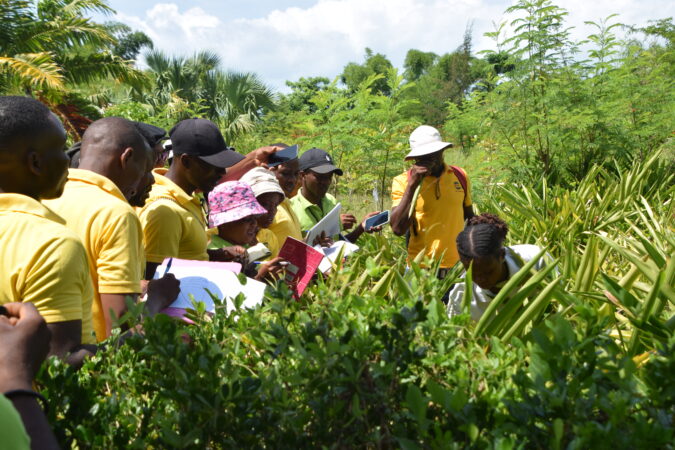
Training session in botanical systematics for students as part of a training internship at the Botanical Garden of Les Cayes.
It is made up of four departments, including a scientific research and conservation department, intended for plant research, and an education department open to schoolchildren and students wishing to expand their knowledge. There is also a horticulture department which teaches people how to maintain their garden, and a development and marketing department which popularizes research in order to educate the general public.

Practical session in beekeeping at the Botanical Garden of Les Cayes.
The garden is organized into four main sections. First an ethnobotanical section which reproduces all of the native, endemic plants like the Ti pwason (Amyris apiculata) – only available in Haiti – the Agave brevispina, the Lang Bèf (Clavija domingensis), etc.
The Botanical Garden is home to around 40 of the country’s 2,000 endemic plants. Its main attraction is made up of native and exotic plants, used as decor for wedding ceremonies, picnics, etc.
The institution also has an arboretum where plant nurseries are maintained.
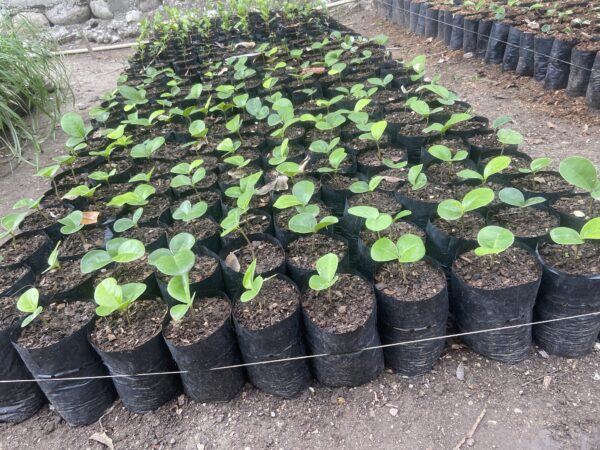
Reproduction of a critically endangered species, « Clavija domingensis, » by the nursery manager of the Research and Conservation Department of the Botanical Garden of Les Cayes.
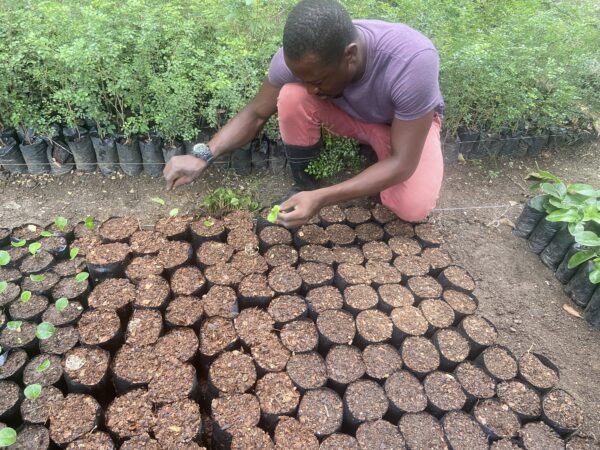
Although the garden remains an important space for the environment and the conservation of the country’s ecosystem, it does not benefit from State funding.
Marie Huguena Jean Louis, agronomist and assistant director of the Botanical Garden, relates that on a financial level “the political crises in the country have definitely caused the Cayes Botanical Garden to regress.”
From 2013 to 2017, the space received an average of 30,000 to 50,000 visitors per year. From 2019 to 2022, the garden fluctuated between 5 to 10,000 visitors per year with difficulty.
Initiatives like annual subscriptions and the sale of services are not sufficient. According to the employee, the company’s revenue fell by almost 40% last year.
Agronomist William Cinéa does not want to let the project wither. By 2030, he plans to make the space more therapeutic through a restructuring of the institution.
The survival of the garden remains critical, particularly for schools in the South.
Vital Paul Édouard is an agronomist and internship planner at the Integrated University of the Caribbean (UNICA) in the Cayes annex.
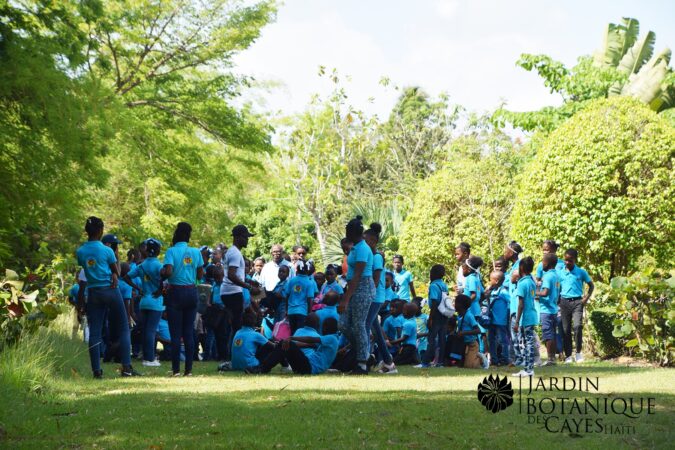
Scientific visit of a school from the city of Les Cayes to the Botanical Garden of Les Cayes.
He very often takes his students on exploratory and scientific visits to the Botanical Garden. “These visits, which take up nearly 60 hours of lessons, allow students to come face-to-face with the agricultural reality,” declares the agronomist.
Read also: Le jardin botanique de Source Zabeth : un projet mort-né
Confronting this reality remains essential for students. According to Édouard, “without these visits, there are theoretical concepts that students will not be able to properly grasp.”
English translation by Sarah Jean.
Cover Image: PAP PADAP TRAVELS
Watch our meeting with the managers of Forêt des Pins in 2021, discussing the importance of this ecological treasure in Haiti.
Stay in touch with AyiboPost through :
► Our WhatsApp channel : click here
► Our WhatsApp Community : click here
► Our Telegram canal : click here

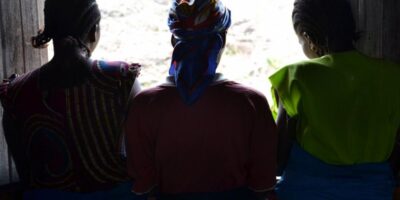





Comments